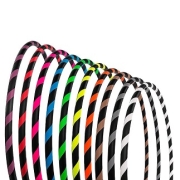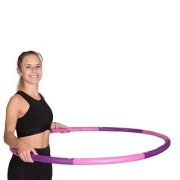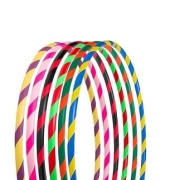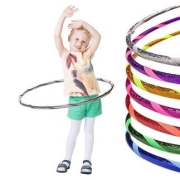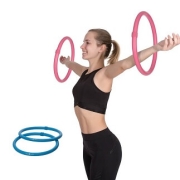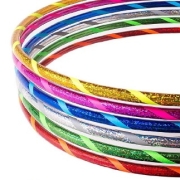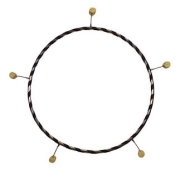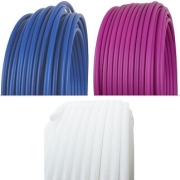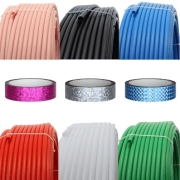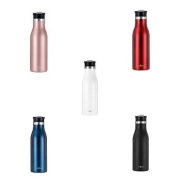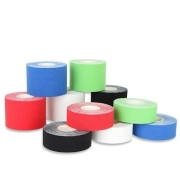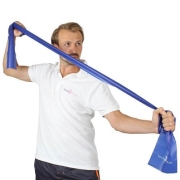Hoop Dance – On-Body Off-Body Hoopomania Hooping
On-body and off-body hooping are different variations of hooping and include numerous different ways of performing.
- On-Body = the hoop is located around the body axis and is circled here
- Off-Body = The hoop is located outside the body axis and can be thrown, rotated, circled or jumped through the hoop
Examples for On-Body Hooping
Waist Hooping

The classic - the hoop spins around the center of the body at waist level. To do this, swing the hips evenly from either left to right or right to left.
Chest and Shoulder Hooping

Not for beginners - with both arms pointing down, the hoop is circled at chest and shoulder level. To achieve this, first practice hooping at chest level with both arms pointing up. Once this is working well you can continue with one arm pointing downward to eventually progress to chest and shoulder hooping, with both arms down.
Neck Hooping

Perfect introduction - this is also a good way to prepare for chest and shoulder hooping, which is usually learned quickly. Here you let the hoop circle around your neck.
Knee Hooping

With a lot of practice - knee hooping involves slowly bringing the hoop up to knee height and then moving one leg or even both legs back and forth in the right rhythm, depending on how you feel, to be able to keep the hoop at knee height.
Examples of off-body hooping
The Lasso

For beginners - this trick is quickly learned and therefore a good introduction. The hoop is circled around the palm like a lasso above the head.
Arm and Ellbow Hooping


For strong arms - arm hooping involves circling the hoop around the arm. This can be practiced on one arm only at first and then on both arms at the same time. From this position it is possible to switch to Ellbow Hooping. As the name suggests, the hoop is circled around the elbow. To do this, bend the arm upwards in the direction of the head in order to get into the right position. In this position, move the elbow rhythmically up and down.
Hand and Palm Spin



The transition - these two tricks are often used to create a transition between different tricks. They are very similar in execution, with the handspin being the easier entry. In handspin, the hoop is spun in the hand and can be passed to the next hand with another handspin or remain in the same hand. In palm spin, the hoop is spun around the open hand while being gripped and spun around once completely. The arm can be pointed in any direction.
Basic Escalator



The connection - this trick offers a great opportunity to combine on-body and off-body tricks. For this, the hoop stands upright on the floor, vertical to the body, and is held at the top with one hand. Then you step into the hoop with your foot, which is next to the hoop, so that the hoop is around your ankle up to your calf. Now take the hoop upwards in the direction of the belly button, climb into the hoop with the second leg and finally give the hoop back over your head with a folding movement. So this is once from the outside around the body axis up and back out. Once you have mastered the Basic Escalator, you can move on to other variations of this trick.
Which hoop is suitable for what?
For off-body hooping, the hoop should be made of a lightweight material, such as polypropylene or HDPE. A weight of 200-300gr is ideal. A tube diameter of 16mm is a bit more filigree, but 20mm is also suitable for this purpose. The ideal tire diameter can vary from trick to trick. A good guideline here is between 75 - 85cm, but especially for arm or leg tricks it can be smaller, e.g. 50cm. So that the tire lies well in the hand, a tire with grip tape is advantageous.
For on-body hooping, a tire made of PE (polyethylene) is suitable, because this material is heavier. The tire should be a little heavier, especially at the beginning, so it is easier to hold up. Between 400-650gr are ideal here. For the right tire diameter measure from the ground to the navel and this length can be used as the diameter. If you are between two sizes, choose the larger one here. The larger the diameter, the longer you have for the movement. A grip tape is also advantageous here due to the better grip.




